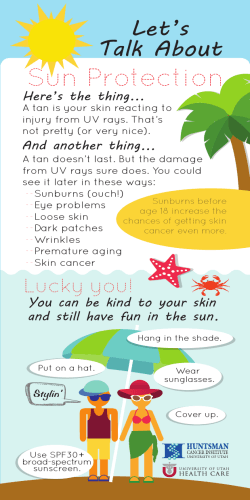
Written Assignment
CPSC 453, Winter ’15, Written Assignment CPSC 453, Winter 2015, Written Assignment (A3) Released: March 19th, 2015 DUE: April 2nd, 2015 in class Full Name: ______________________________________________ Student ID: __________________________________________ This assignment is individual work. 10% of the final grade Print it out, fill your name and ID, carefully answer all the questions and hand it in on March 31st, 2015 in class Please use BLUE pen to answer your questions Late hand-ins will NOT be accepted Question # Points Your Points Q1 5 Q2 13 Q3 8 Q4 7 Total 33 1 CPSC 453, Winter ’15, Written Assignment Q1: (5 points) Given a mesh defined by the list of four 2D faces, with the following vertex indices: Face-1 (4, 1, 3); Face-2 (4, 7, 2, 1); Face-3 (2, 7, 5); Face-4 (3, 8, 9, 7, 4). In a connected mesh, each face shares at least one edge with another face. (1) Is this given mesh connected (answer yes/no)? Your Answer: __________ (2) Sketch the object, choosing arbitrary positions for the nine vertices. Make sure you label each vertex by its index (i.e. 1, 2, 3, 4, 5, 7, 8, 9) Your Answer: Q2: (13 points) This is a standard multiple choice question. Each question has only one correct answer. Please circle that one answer clearly. If any question has more than one answer circled in, it will be marked wrong. 1) If you want a rotation of 270 degrees around the z-axis, the value in the first row, second column should be a) sin(270) b) –sin(270) c) cos(270) d) –cos(270) 2 CPSC 453, Winter ’15, Written Assignment 2) Which of the following affine transforms does NOT affect vectors? a) Translation b) Scale c) Rotation d) Shear 3) Which of the following affine transforms is NOT used in rotation around a specific axis and point? a) Translation b) Scale c) Rotation 4) All of the following are true about affine transforms EXCEPT: a) All lines are mapped to lines b) All angles are preserved c) All parallel lines remain parallel 5) The last column of an affine transform matrix does not affect vectors. a) True b) False 6) The Phong reflection model simplifies light-matter interactions into (essentially) 4 vectors and a number of constants. Each piece of the Phong model uses different vectors and constants. Which portion does NOT include taking a dot product? a) Ambient b) Diffuse c) Specular 3 CPSC 453, Winter ’15, Written Assignment 7) The Phong reflection model simplifies light-matter interactions into (essentially) 4 vectors and a number of constants. Which of the following is NOT a vector needed for the Phong reflection model? a) Surface Normal b) Direction to Viewer c) Direction to Material Center d) Direction to Light 8) In the Phong Reflection model, ambient light is the same everywhere. a) True b) False 9) In the Phong reflection model, there are 3 constants (a, b, c) which are used to describe the qualities of which of the following phenomena? a) The material reaction to ambient, diffuse and specular light (respectively) b) The amount to perturb reflection vectors as they are mirrored across the normal c) The size (in each dimension) which the light is assumed to have d) The attenuation of a point light source with distance 10) As discussed in class, when obtaining normals for a triangle, which of the following mathematical constructs is NOT used? a) Point-Point subtraction b) Vector dot products c) Vector cross products d) Vector normalization 11) The majority of the execution time of a ray tracer is spent in ray-object intersection code. a) True b) False 4 CPSC 453, Winter ’15, Written Assignment 12) 13) Snell’s law is used to calculate which one of the following rays? a) Primary (or start) rays b) Shadow rays c) Reflection rays d) Transmission rays When you hit a surface in ray tracing, generally shadow rays are tested against all objects in a scene. If these rays come back saying they hit an object in the scene, which of the following do you do? a) Add none of the light from that light source to the object b) Add only the ambient light from that light source to the object c) Add all EXCEPT the ambient light from that light source to the object (i.e. diffuse and specular) d) Add all components (i.e. ambient, diffuse and specular) from that light source to the object. Q3: 8 points – Please write down the 3 X 3 affine transformation matrix corresponding to: 1) (4 points) A counterclockwise rotation by an angle theta about the origin, followed by a translation t = (t1, t2) 2) (4 points) A clockwise rotation by an angle theta about the origin. 5 CPSC 453, Winter ’15, Written Assignment Q4: (7 points) For the following scene, there are 7 rays in total. Sketch the ray paths and shadow rays that would be generated by a ray tracer in order to compute the color for the given pixel of the primary ray P1. For each ray path, write down their labels R<number>, T<number>, S<number> for reflective, transmissive and shadow rays, respectively. END OF ASSIGNMENT 6
© Copyright 2025









